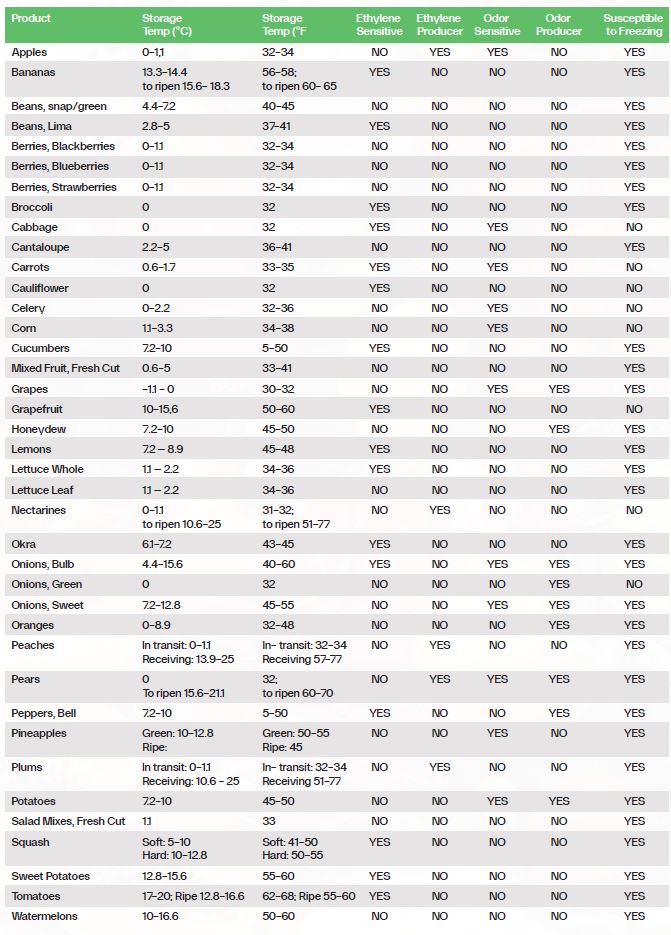Fruit & Vegetable
Storage
RECEIVING FRUITS & VEGETABLES
- Reject if they are wrinkled, stigmatized, with degraded color or beginning to rot.
- Reject if fruits or vegetables appear dehydrated or too soft (overripe).
- Accept products only when they are in top quality condition.
STORING FRUITS & VEGETABLES TIPS ON HOW TO PROLONG FOOD SHELF LIFEFOOD IMMEDIATELY
- Store delivered food immediately after inspection
- Store food on shelves and never on the floor
- Do not wash product prior to storage
- Stocking space should be clean and dry
- Transfer all fruits and vegetables from delivery cartons to well ventilated storage containers; separate fruits and vegetables if possible.
- Store fresh produce in the dedicated refrigerator at 32°F to 41°F (0oC to 5oC) to ensure freshness and to prevent rapid deterioration. There are, however, several exceptions, including potatoes and bananas which should be stored at higher temperatures.
- Do not place any cart boxes inside the walk-in fridge and do not bring them to the galley,
- Daily routine must include inspection of fridge and other perishable fresh food.
Follow FIFO Principles
- Provide adequate air circulation in coolers.
- Store products at least four inches from walls so air can freely circulate.
- Any surface that fresh produce comes in contact with should be cleaned and sanitized regularly.
- Unripe fruit can be ripened at storeroom temperatures of 50°F to 59°F (10°C to 15°C). It will ripen slower under refrigerator conditions.
- Before storing and when rotating stock, it is important to remove rotting fruit from cases as one piece can affect others. The chain reaction can quickly destroy the quality of a whole case of fruit.
- Be aware of items with special storage conditions. For example, bananas should be stored under conditions where the temperature range is 50°F to 59°F (10°C to 15°C), to ensure prolonged self-life.
- Hardy vegetables such as carrots or cabbage can last for weeks.
- Moisture on vegetables tends to soften them, causing rot, and most importantly they can carry pathogens like Listeria Monocytogenes.
|
ETHYLENE GUIDELINES
|
Procedure to follow:
|

Source : Oceanic Magazine
